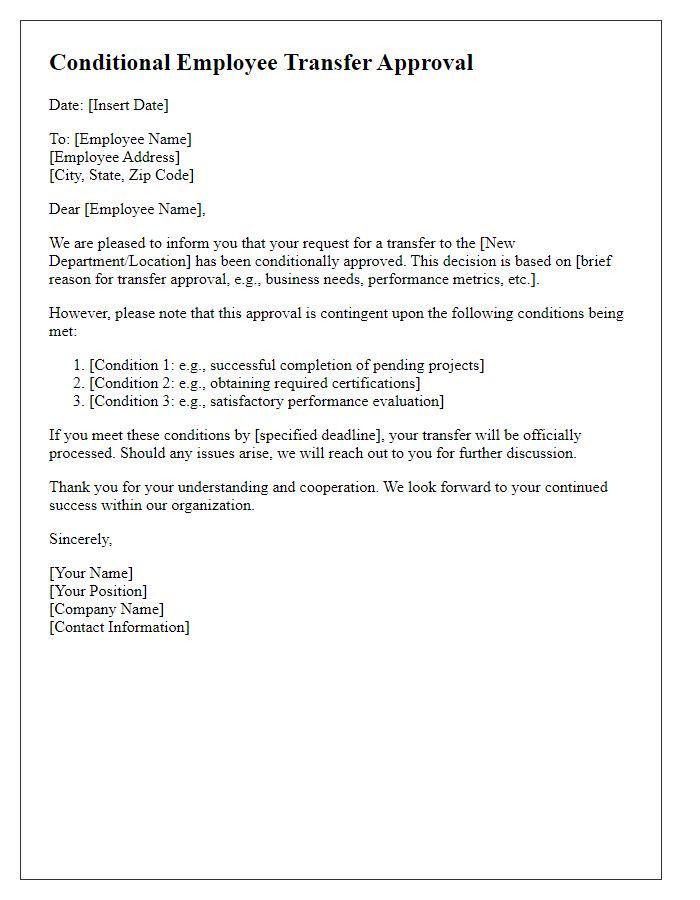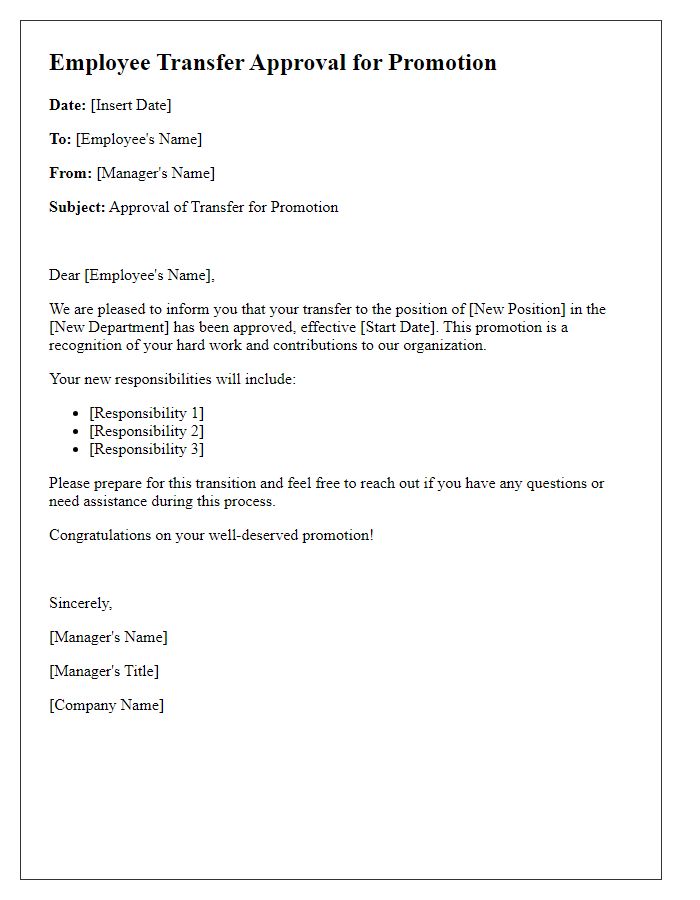Are you looking to navigate the sometimes tricky waters of employee transfer approvals? It can feel overwhelming to ensure you have all the necessary details in place for a smooth transition. In this article, we'll break down the essential components of crafting a professional and effective letter template that will not only convey your intentions clearly but also foster a positive atmosphere for both the employee and management. Dive in to discover tips and examples that will streamline your transfer request process and keep everyone on the same page!

Subject Line Optimization
Request for Employee Transfer Approval - [Employee Name] - [Department] to [New Department]
Professional Tone and Language
An employee transfer often involves various aspects such as department changes, role adjustments, and potential impact on team dynamics. When considering a transfer request, factors like employee performance metrics, current workload, and specific skills relevant to the new position should be assessed thoroughly. An evaluation of the receiving department's needs ensures a smooth transition. Highlighting the employee's contributions to the current team and how their experience aligns with the new role emphasizes the rationale for the transfer. Additionally, it is essential to outline the expected timeline for the transfer process and any necessary training that may be required to facilitate the adjustment.
Detailed Transfer Information
Employee transfer requests often involve significant details that impact both the organization and the employee, such as the employee's current position, the new role's responsibilities, and the specific location (e.g., Atlanta, Georgia) to which the transfer is requested. The timeline for the transfer process can be crucial, typically ranging from two weeks to a month, allowing for a smooth transition. Additionally, pertinent information may include the team dynamics, training needs for the new role, and the employee's qualifications, reflecting their suitability for the new position. Employer considerations must also encompass the company's operational requirements, potential impacts on workflows, and the need for notice periods as dictated by company policy.
Clear Instructions and Expectations
An employee transfer approval process requires clear communication of expectations and guidelines to ensure a smooth transition for both the employee and the organization. The transfer request should include essential details such as the employee's current position, new position, effective date of transfer, and the reasons for the transfer. Human resources should outline steps for the employee, including meeting with department managers, completing necessary paperwork, and attending an orientation for the new role at the receiving department. Key performance indicators should be established to guide the employee's success in the new position, encompassing timelines for achieving specific goals. Additionally, an open line of communication must be maintained between the employee and both managerial teams to address any concerns or questions that may arise during the transition.
Contact Information for Further Inquiries
The employee transfer process involves several stages, including approval from management and alignment with Human Resources policies. For inquiries related to the transfer approval, contact information for the Human Resources department at [Company Name] is essential. Reach out to [HR Manager Name] via email at [HR Email Address] or phone at [(XXX) XXX-XXXX] during business hours, which typically span from 9 AM to 5 PM, Monday through Friday. Additionally, direct communication with the employee's immediate supervisor may provide insights into the transfer rationale and expectations, fostering a seamless transition.













Comments